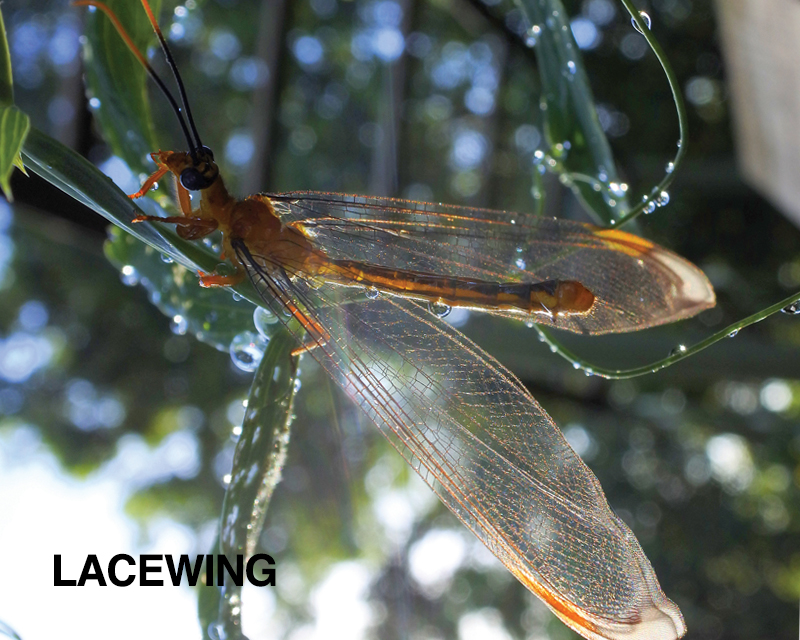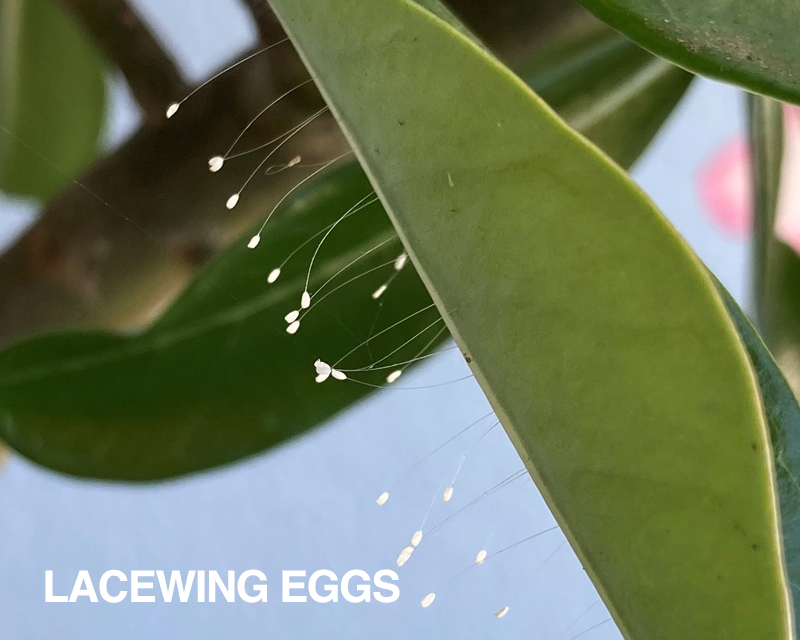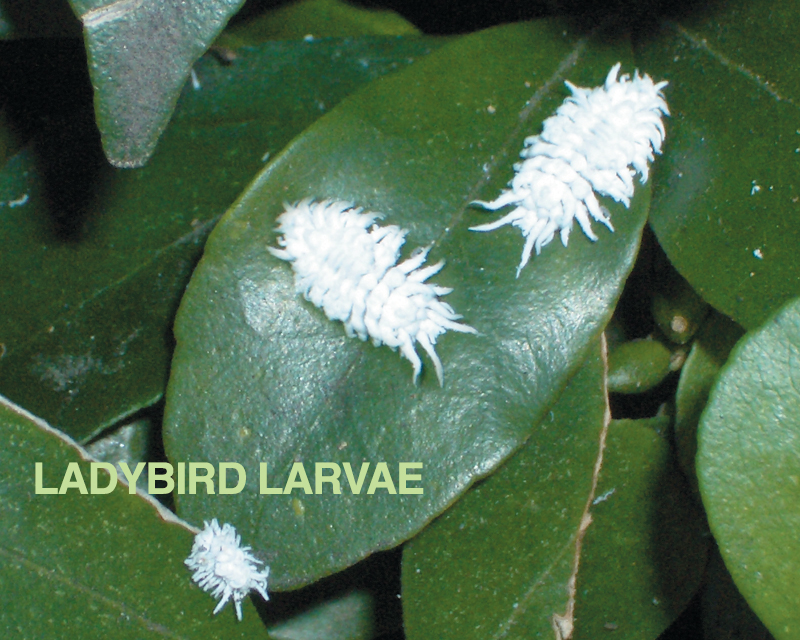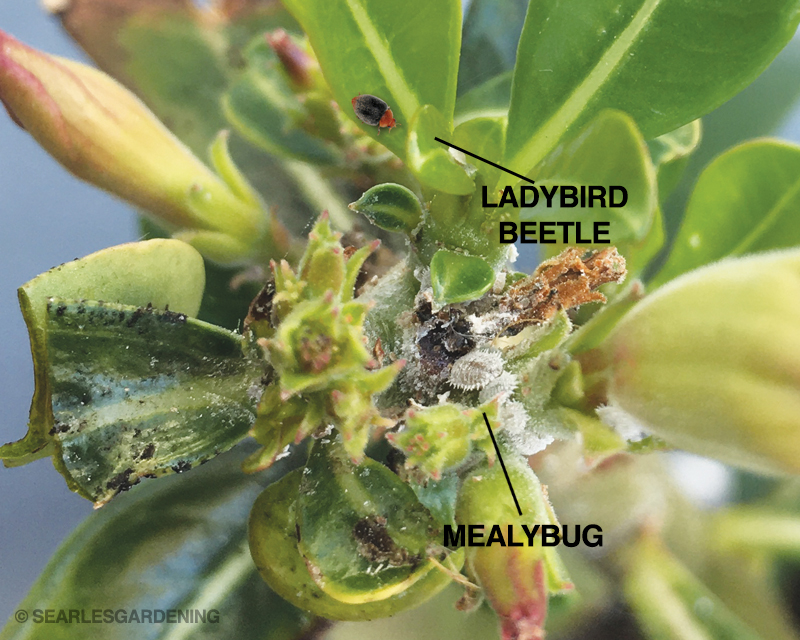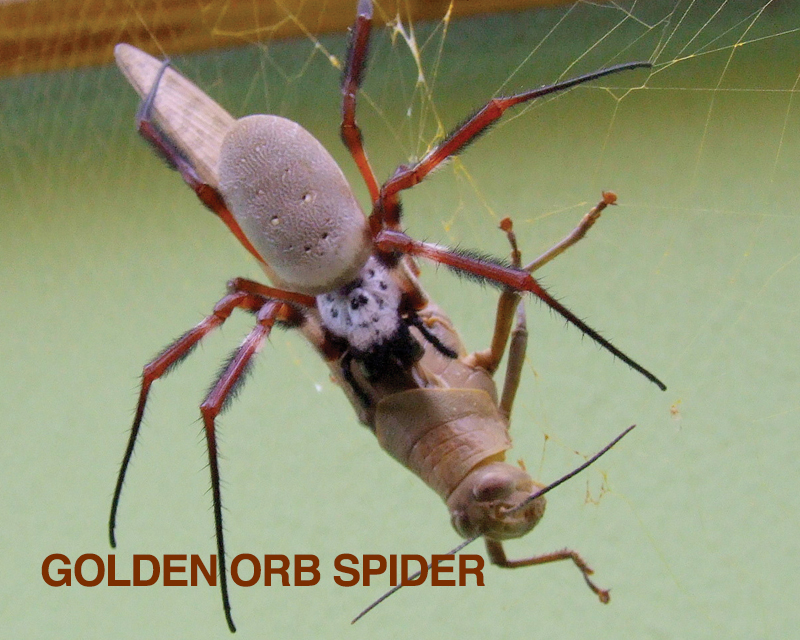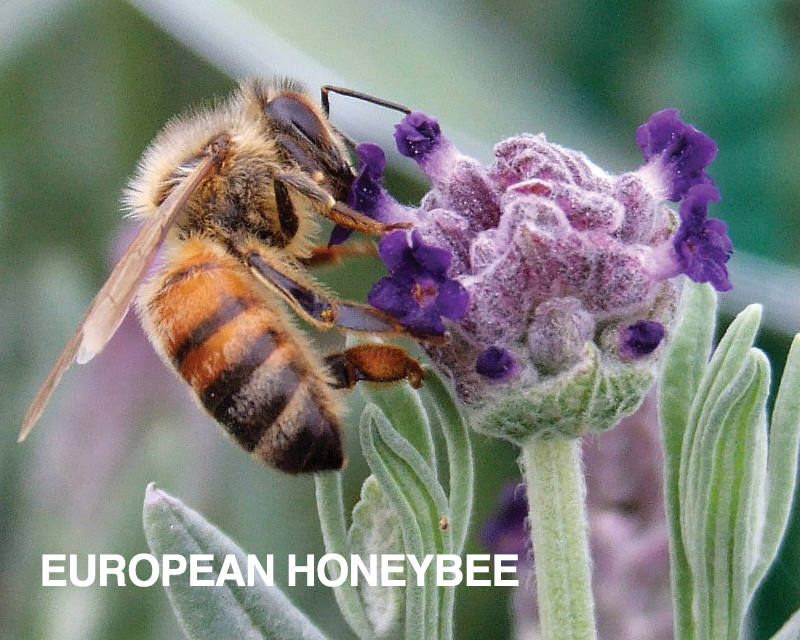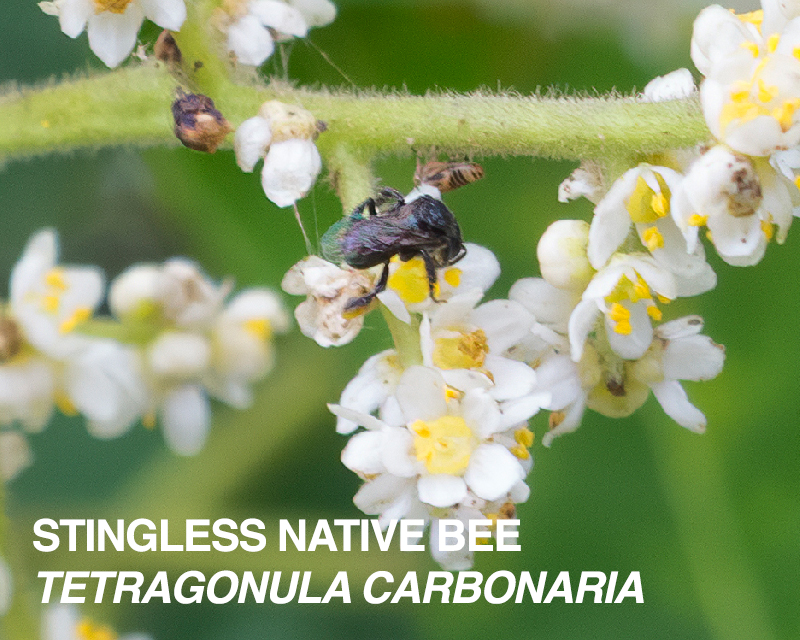Beneficial insects for the garden - Predatory Insects
|
|
Lacewing Chrysopidae These nocturnal insects search for unsuspecting prey such as small grubs, aphids and mealybugs (amongst others) during the night. This is most distinguished by their large eyes which allow them excellent night vision. During the early morning and throughout the day they can be encountered resting underneath densely foliaged plants such as hibiscus, plectranthus or coleus. Although they have large wings, they are weak flyers and can only manage to fly a few metres before requiring rest. They in turn are easily predated by small birds and reptiles if they move around too often during the day. Their young larvae however are wonderful daytime predators feasting on most small insects that plague roses and vegetables. They have the amazing ability to disguise themselves with plant debris which they attach on their backs on small spines. During the summer, the adults are highly attracted to the lights in our homes. Text © About the Garden website |
||||
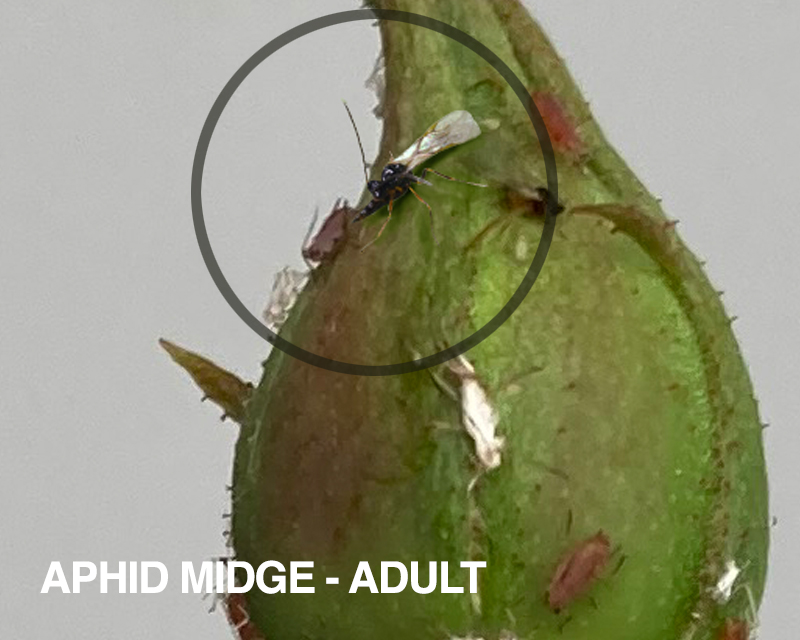 |
Aphid Midge Aphidoletes aphidimyza One of the good guys in the garden, though its name makes you want to scratch. The adult Aphid Midge or Aphidoletes aphidimyza, looks very much like a fungal gnat but is a predator in the garden. Hiding under leaves through the day and emerging at night to reproduce. The female aphid midge can lay over a hundred eggs at a time, and these shiny orange eggs are carefully laid amongst a colony of aphids, so there is a sufficient food supply for her young. To make sure they get the most from the aphid colonies, the adult aphid midge feeds on the honeydew that the aphids produce. read more detail |
||||
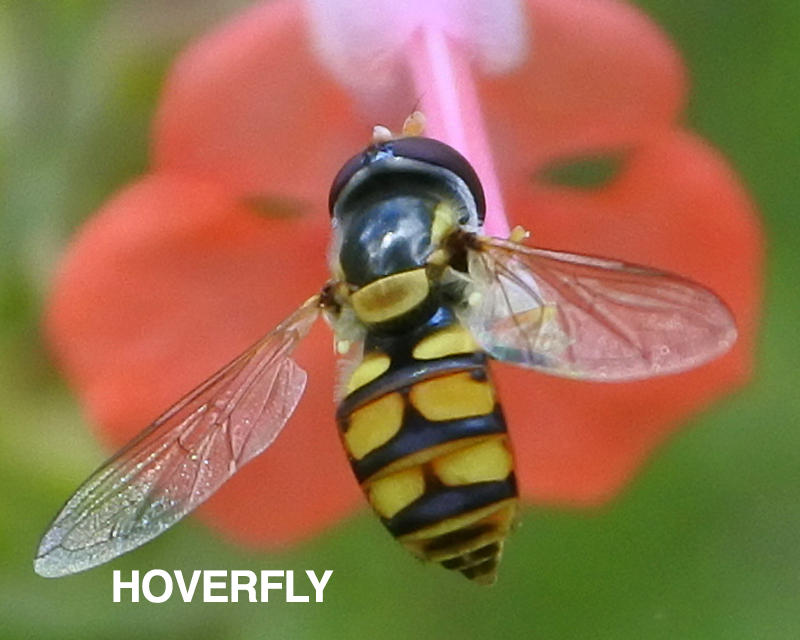 |
Hoverflies Syrphidae These small flying insects can be found on a global scale and have proven themselves worthy time and time again. They come in a few colour forms yet the most common will have black and yellow markings on its rear that often resemble a wasp at first glance. This clever mimicry helps them to avoid being eaten themselves by a larger predator. Hoverfly larvae are fierce predators of small sap-sucking insects such as aphids and thrips, plus they will also feast on small caterpillars. The adult insects are amazing pollinators in their own right as they scour nectar-rich blooms and are being further studied for this ability in the absence of honey bees. read more detail
|
||||
|
|
Ladybird Beetle Cryptolaemus montrouzieri These Australian native ladybird beetles are very efficient predators of many species of mealybug and soft scale insects. Larvae can be easily mistaken for mealybugs. Ladybird larvae have waxy, more cotton-like fluffy filaments. Adult beetles are about 4 mm long with an orange head and black wing covers. Adult beetles lay their eggs inside mealybugs and their larvae feed on mealybug eggs and young ones. |
||||
 |
Praying Mantis Mantodea Praying mantis can be found in all warmer parts of the world and are a strong predator. They are a solitary species that roam the garden no matter the plant species looking for unsuspecting prey that are all too often highly focused on devouring plant material. For an insect of its size, they are highly intelligent and will often gaze back at humans with an inquisitive set of large alien-like eyes! Mantis will prey on any soft bodied insect such as caterpillars, beetle larvae, ants, small spiders, small butterflies and moths, aphids and mealybugs. The larger females produce an intriguing egg sack on plants that dry hard and brown of which up to one hundred tiny offspring emerge at the end of summer to begin their solitary lives from the get-go. Most people do not recognise these egg sacks as that of a mantis and simply cut them off the chosen plants and place them either in the compost or underfoot. Although Mantis can be found on an assortment of plants, they seem to have a special fondness for the likes of Dill, Fennel and Goldenrod as these plants seem to also attract smaller insects that are easily pounced upon. Text © About the Garden website |
||||
|
|
Spiders Arachnida Although unnerving to many, spiders play an important role in our gardens. There are several thousand different species to be found around the world with many that require to be treated with full respect due to their venomous nature, but there are also many more that play a silent role in our gardens to help control many common pests. All spiders are solitary by nature and only come together for breeding purposes and even then, the male of most species are regarded by the females as a dinner option after the act! The common lynx spider (Oxyopes quadifasciatus) is a small harmless species that travels across many smaller shrubs and waits in ambush to catch its prey. They stay close to the flowering of many plants in the hopes of catching a passing bee, small butterfly, ants or small caterpillars. The green jumping spider (Mopsus mormon) can always be found during the heat of summer on low growing plants, in cars, steps and walls. This tiny spider slowly sneaks up on its prey and can jump from plant to plant in search of prey such as small flies, ants, mealybugs and many other small crawling insects. One of the larger spider species to frequent our backyards is the golden orb weaver (Nephila plumipes). Females are often ten times larger than the tiny males and are a little intimidating to observe, yet couldn’t be less interested in humans. They make strong, golden silken webs (sometimes) in the most inconvenient of places such as across pathways, doorways or under archways. Orb weaver spiders are simply one of the very best spiders for keeping pesky mosquito and fly populations under control as they can catch many thousands in their lifetime. A truly intimidating household spider is the Huntsman spider (Heteropoda jugulans). They are a nocturnal predator and are often discovered within homes where they have chased their prey such as cockroaches, silverfish or other small spiders. Note: Although the spiders mentioned are regarded as harmless and non-venomous to humans, it is strongly suggested that handling of any spider should be avoided. Text © About the Garden website |
||||
 |
|
||||
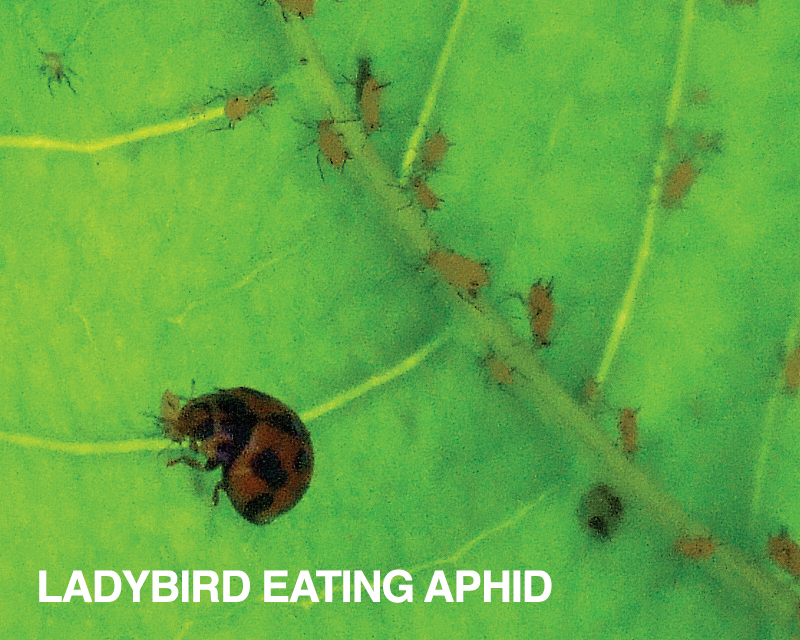 |
|
||||
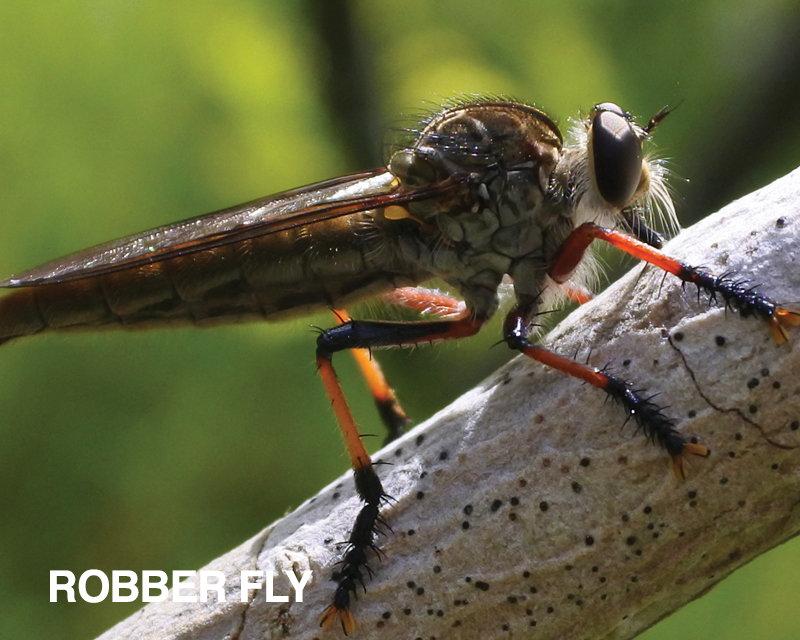 |
|
||||
|
|
Bees Hymenoptera Bees are so awesome and whilst they don’t attack insects, bees are so beneficial to your veggie patch that we had to mention them. If you don’t have bees, your flowers won’t open and your veggies won’t grow. They are a fundamental inclusion to a veggie patch and by planting flowers that attract bees the produce will flow. |
||||





